My development environment is this:
- OS: Microsoft Windows 10
- PHP framework: Laravel 8.0
- PHP version 7.4
- Websocket server: cboden/ratchet 0.4.3
- WAMP server 3.2.0 (Apache 2.4.41)
- Firefox 91.0.1 (64-bit) / chrome
I created a new Laravel app to implement a Secure Websocket Server and get connected to it using plain javascript on the client side (Laravel blade file). The websocket server works fine, as far as I can see it running, but the web browser is not able to connect, as seen on this image:
I have tried using different URLs, with and without port number, but to no avail. I created a SSL certificate and private key files, using openssl.exe tool, and put them in the command folder for testing purposes.
This is my handle code for the Secure Websocket Server:
public function handle()
{
$loop = Factory::create();
$webSock = new SecureServer(
new Server('0.0.0.0:8090', $loop),
$loop,
array(
'local_cert' => 'certificate.crt',
'local_pk' => 'private.key',
'allow_self_signed' => TRUE,
'verify_peer' => FALSE
)
);
// Ratchet magic
$webServer = new IoServer(
new HttpServer(
new WsServer(
new WebSocketController()
)
),
$webSock
);
$loop->run();
}
My virtual host in httpd-ssl.conf file:
<VirtualHost *:443>
ServerName ssa
DocumentRoot "d:/web/app/ssa/public"
SSLEngine on
SSLCertificateFile "${SRVROOT}/conf/certificate.crt"
SSLCertificateKeyFile "${SRVROOT}/conf/private.key"
SSLVerifyClient none
SSLVerifyDepth 10
<Directory "d:/web/app/ssa/public">
Options +Indexes +Includes +FollowSymLinks +MultiViews
AllowOverride All
Require local
</Directory>
ProxyRequests Off
ProxyPass /wss/ ws://ssa:8090
</VirtualHost>
The Apache modules proxy_module, proxy_http_module and proxy_wstunnel_module are loaded. The web app is running in HTTPS. Before, it was running over HTTP and WS and everything worked perfectly, but I need to secure this app and I am having issues to connect to the secure websocket server.
Am I missing something?
Is there something wrong with my Websocket server or Apache configuration?
